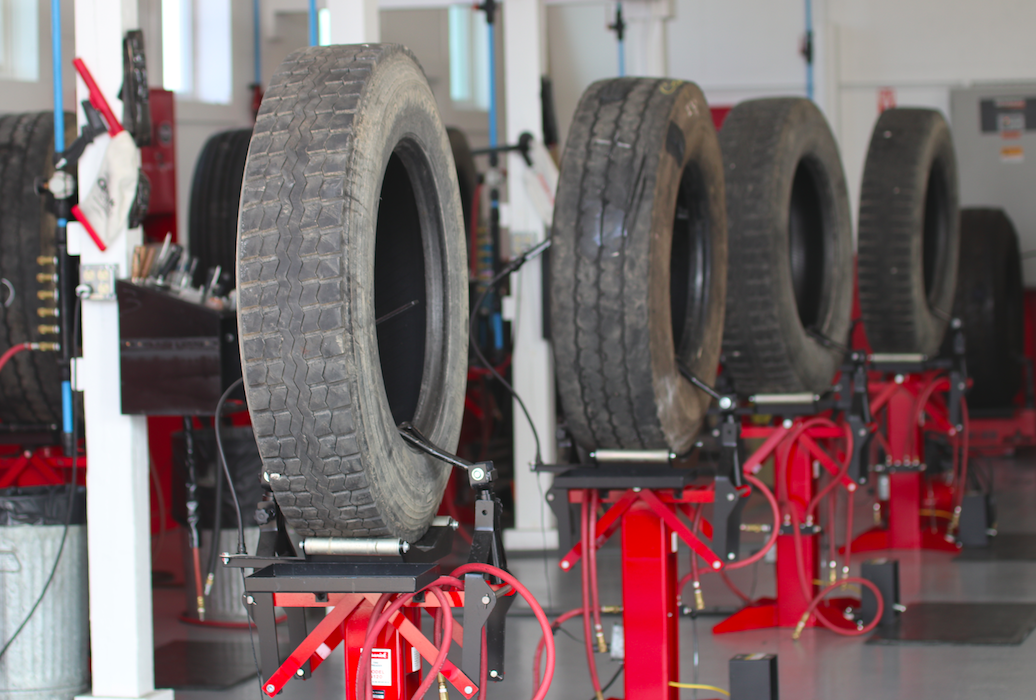Morris Tire: Trusted Tire Solutions
Morris Tire: Trusted Tire Solutions
Blog Article
Expert Overview to Tire Repair Service: Everything You Need to Know
In this detailed overview, we will certainly untangle the complexities of tire repair service, losing light on the different types of repair kits readily available and offering useful understandings right into when it could be time to bid farewell to a worn-out tire. Remain tuned as we dive deeper right into the nuances of tire upkeep, outfitting you with the necessary expertise to guarantee your tires stand the examination of time.
Typical Root Causes Of Tire Damage
What are the usual reasons that result in tire damage, influencing automobile efficiency and safety and security? Tire damages can occur as a result of different factors, with one of the main factors being incorrect rising cost of living pressure. Under-inflated tires can create extreme heat buildup, resulting in enhanced wear and prospective blowouts. Alternatively, over-inflated tires can cause minimized traction, irregular wear, and a harsher trip.

An additional typical root cause of tire damage is poor tread depth. Damaged footsteps can compromise grasp when driving, particularly in damp or unsafe conditions, increasing the risk of mishaps. Additionally, driving over pockets, particles, or sharp items can penetrate or trigger cuts in the tire, deteriorating its structure and potentially triggering a flat.
Additionally, improper wheel positioning and out of balance tires can also contribute to tire damage. Misaligned wheels can lead to unequal wear patterns, while unbalanced tires can create vibrations, influencing both the automobile's handling and the tire's long life. Routine upkeep checks and punctual repair services can aid minimize these typical sources of tire damages, ensuring optimal vehicle efficiency and security.
Kinds Of Tire Repair Kits
To resolve the aftermath of common reasons of tire damage talked about earlier, it is important to recognize the various types of tire fixing sets offered for automobile owners. There are mostly 3 sorts of tire repair work packages frequently used: plug sets, spot kits, and mix repair work packages.
Plug sets are a quick and easy remedy for repairing find small leaks triggered by nails or screws. They are composed of a T-handle tool and rubber plugs that can be put into the slit to seal the hole effectively. Spot kits, on the various other hand, are much more suitable for bigger punctures or cuts in the tire. These sets include a patch and glue material that is put on the internal lining of the tire to cover the broken area safely.
Combination repair sets offer the benefit of containing both plug and spot elements, offering a detailed solution for a range of tire damages scenarios. It is very important for vehicle proprietors to familiarize themselves with these various kinds of tire repair service kits to be prepared for any kind of unforeseen tire concerns when traveling.

Actions to Repair a Tire Slit
Repairing a tire leak needs an organized strategy and the right devices to ensure a safe and effective solution. When faced with a punctured tire, the first step is to safely draw over to a level, secure surface away This Site from traffic. Engage the auto parking brake and location wheel chocks behind the tires to stop any kind of unintended rolling.
When to Change a Tire
Figuring out the ideal time for index tire substitute necessitates a detailed analysis of various key elements related to tire wear and security. As tires use down, the deepness of the walk declines, influencing the tire's grasp on the roadway. Also if the step deepness shows up adequate, tires older than 6 years must be meticulously examined, as the rubber can deteriorate over time, making the tire much more prone to failure.

Tire Maintenance Tips for Durability
After analyzing essential factors associated to tire wear and safety, applying proper tire maintenance techniques is important for optimizing the long life of your tires. Frequently examining tire pressure is crucial, as underinflated tires can lead to enhanced wear and lowered fuel performance.
Revolving your tires at normal periods, generally every 5,000 to 7,000 miles, promotes even walk wear across all tires. Examining tires for indications of damage, such as cuts, bulges, or leaks, is additionally crucial for maintaining tire longevity. By following these tire maintenance tips, you can optimize the life-span of your tires and guarantee a smooth driving experience.
Conclusion
To conclude, comprehending common reasons for tire damages, making use of the proper tire repair service kits, following proper actions to repair a tire puncture, recognizing when to change a tire, and carrying out tire maintenance tips are essential for making the most of the longevity of your tires. By remaining notified and proactive in addressing tire issues, you can ensure safety and security on the roadway and prolong the life-span of your tires.
Report this page